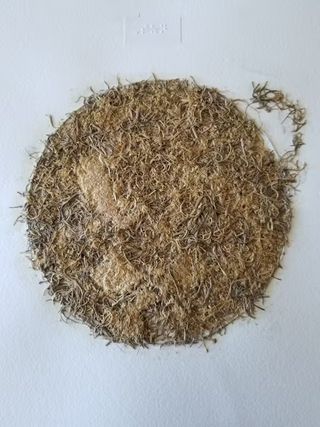An eclipse for everyone – how visually impaired students can ‘get a feel for’ eclipses

United States
Breaking News:
At Least 12 Arrested at U.C. Berkeley After Police Order Protesters to Disperse
Caitlin Clark’s first WNBA meeting with Angel Reese flexed to ESPN
Caitlin Clark, Fever facing plenty of growing pains early after another blowout loss in home debut
‘Super cute please like’: the unstoppable rise of Shein – podcast
Washington DC
Friday, May 17, 2024


Many people in the U.S. will have an opportunity to witness nearly four minutes of a total solar eclipse on Monday, April 8, 2024, as it moves from southern Texas to Maine. But in the U.S., over 7 million people are blind or visually impaired and may not be able to experience an eclipse the traditional way.
Of course they, like those with sight, will feel colder as the Sun’s light is shaded, and will hear the songs and sounds of birds and insects change as the light dims and brightens. But much of an eclipse is visual.
We are a planetary scientist and an astronomer who, with funding and support from NASA’s Solar System Exploration Research Virtual Institute, have created and published a set of tactile graphics, or graphics with raised and textured elements, on the 2024 total solar eclipse.
Related: April 8 total solar eclipse: Why this eclipse repeats itself every 54 years
The guide, called “Getting a Feel for Eclipses,” illustrates the paths of the 2017 total, 2023 annular and 2024 total solar eclipses. In a total eclipse, the Moon fully blocks the Sun from Earth view, while during an annular eclipse, a narrow ring of sunlight can be seen encircling the Moon.
The tactile graphics and associated online content detail the specific alignment of the Earth, Moon and Sun under which eclipses occur.
To date, we have distributed almost 11,000 copies of this book to schools for the blind, state and local libraries, the Library of Congress and more.
Breaking space news, the latest updates on rocket launches, skywatching events and more!

NASA has lots of explanatory material that helps people visualize and understand rare phenomena like eclipses. But for people with visual impairments, maps and images don’t help. For tactile readers, their sense of touch is their vision. That’s where this guide and our other tactile books come in.
Over 65,000 students in the U.S. are blind or visually impaired. After working with several of our students who are totally blind, we wanted to find out how to make events like eclipses as powerful for these students as they are for us. We also wanted to help our students visualize and understand the concept of an eclipse.
These aims resulted in the three tactile graphics, which are physical sheets with textures and raised surfaces that can be interpreted through touch, as well as online content.
The first tactile graphic models the alignment of the Earth, Moon and Sun. The second illustrates the phases of an eclipse as the Moon moves in between the Earth and Sun to full totality, and then out of the way. The third includes a map of the continental U.S. that illustrates the paths of three eclipses: the Aug. 21, 2017, total eclipse, the Oct. 14, 2023, annular eclipse and the Apr. 8, 2024, total eclipse. We used different textures to illustrate these concepts.
Each book includes a QR code on the front cover, outlined by a raised square boundary. The code links to an online guide that leads the user through the content behind the graphics while also providing background information. With the online content, users may opt to print the information in large font or have it read to them by a device.
Although initially created to assist visually impaired audiences, these books are still helpful resources for those with sight. Some students can see but might learn better when able to explore the tactile parts of the guide while listening to the audio. Often it’s helpful for students to get the same information presented in different styles, with options to read or have the content information read to them.

We hand-make each book starting by identifying which science concepts the user will likely want to know, and which illustrations can support those concepts.
Once identified, the next step is to create a tactile master, or model, which has one or more raised textures that help to define the science concepts. We pick a set of unique textures to use on the master to signify different items, so the Sun feels different than the Earth. This way, the textures of the graphics become part of the story being shared.
For example, in a model of the Sun’s surface, we use Spanish moss to create the dynamic texture of the Sun. In past projects, we’ve used textures like doll hair, sand and differently textured cardboard to illustrate planet features, instruments on spacecraft, fine surface features and more. Then, we add Braille labels for figure titles, key features and specific notes.

Once we’ve finished making the masters and laying out each page, a small family print shop – McCarty Printing in Erie, Pennsylvania – prints the page titles and key feature labels on Brailon, a type of plastic paper.
Once printed, we place the masters and the Brailon sheets on a thermoform Machine, which heats up the sheets and creates a vacuum that forms the final tactile graphics. Then, we return the pages to McCarty Printing for binding.
Related Stories:
Like fully sighted people, people with partial vision should avoid looking directly at the Sun. Instead, everyone should use eclipse glasses. If you don’t have eclipse glasses, you can use an indirect viewing method such as a colander or pinhole projector.
As the eclipse approaches totality, take time to enjoy your surroundings, feel the changes in temperature and light, and note how the animals around you react to the remarkable event using another of your senses – sound.